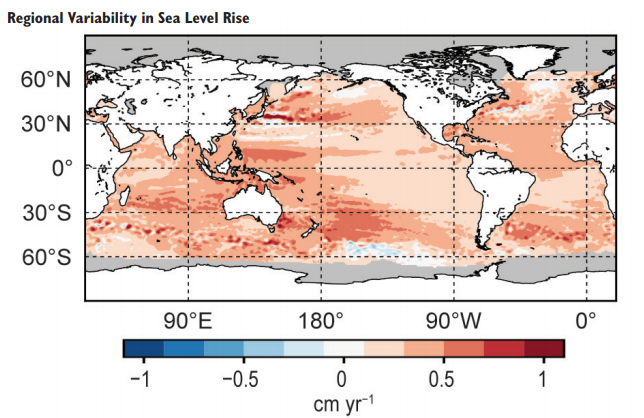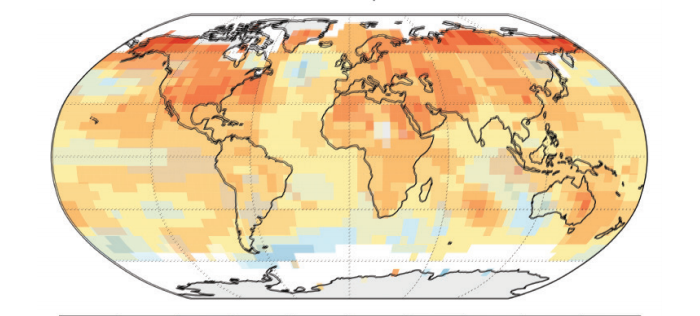The American Meteorological Society published its “State of the Climate in 2017”, reporting that the sea level last year was the highest annual average since 1993. The sea level has increased for the sixth consecutive year.
While the global average sea surface temperature (SST) in 2017 was slightly lower than the 2016 value, the long-term trend remained upward, with the last three years seeing the three highest annual average SSTs on record. Variations existed among ocean regions.
[smlsubform prepend=”GET THE SAFETY4SEA IN YOUR INBOX!” showname=false emailtxt=”” emailholder=”Enter your email address” showsubmit=true submittxt=”Submit” jsthanks=false thankyou=”Thank you for subscribing to our mailing list”]
Compared to 2016, the sea surface in 2017 was mostly cooler in the tropical and subtropical oceans, while warming took place in the midlatitudes. The global average SST anomaly, relative to the 1981–2010 climatology, remained positive but was reduced slightly from a record high of +0.40 (±0.06) °C in 2016 to +0.34 (±0.06) °C in 2017.
Global mean sea level in 2017 was the highest annual average since 1993, with values 77 mm above the 1993 average. Levels have risen for six consecutive years and in 22 of the last 24 years. Regional variations were evident, with differences happening due to changes in trade wind strength and downwelling Ekman pumping, along with 2017’s ENSO-neutral to weak La Niña conditions.
Oceanic heat content (OHC) also increased in 2017, with integrals of 0–700- and 0–2000-m OHC reaching record highs. Using six global integral estimates and applying a linear trends fit, the 0–700-m OHC year-to-year gain from 1993 through 2017 ranged from 0.36 to 0.40. Along the east coast of North America, SSTs, OHC, and sea level were all high in 2017, as they have generally been since at least 2009.

As for the Arctic, sea ice extent continued to see low levels. On 7 March, the 2017 maximum extent of Arctic sea ice was 8% below the 1981–2010 mean, making it the lowest maximum extent in the 38-yr period of record. The September 2017 sea ice minimum was the eighth lowest on record, 25% smaller than the long-term average.
What is more, sea ice in the Arctic in recent years is new, thin, and vulnerable to breakup and melting, speeding up the year to-year drop in sea ice extent, while the areal coverage by old, thicker ice continues to decrease to a smaller portion of the total Arctic ice coverage.
You can see more information in the PDF herebelow































































